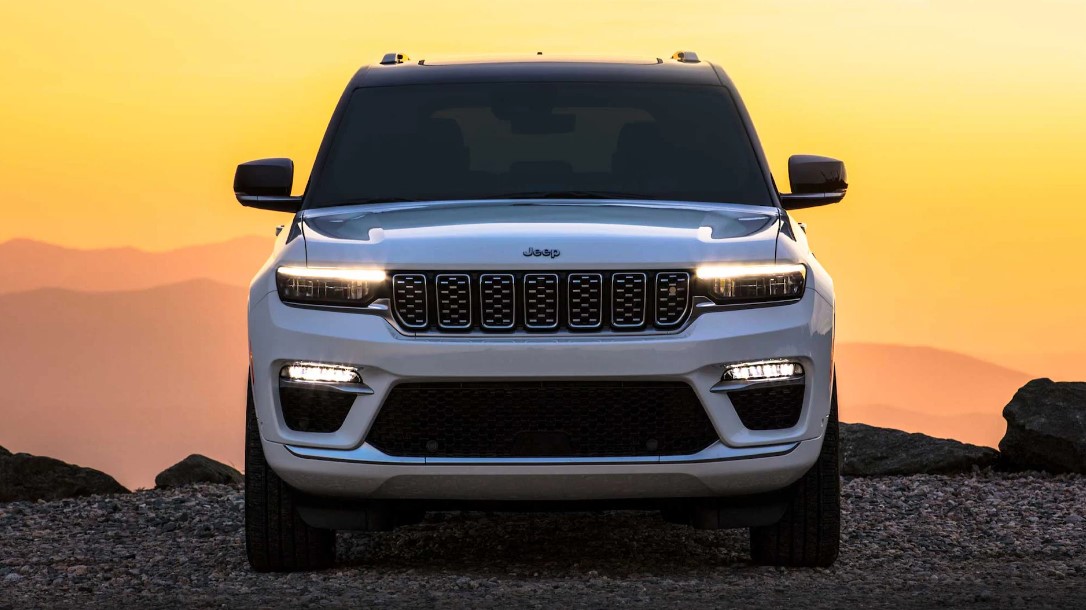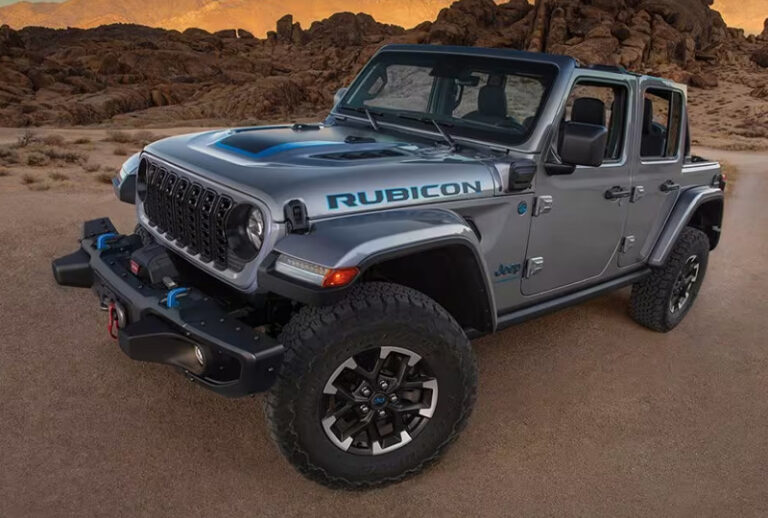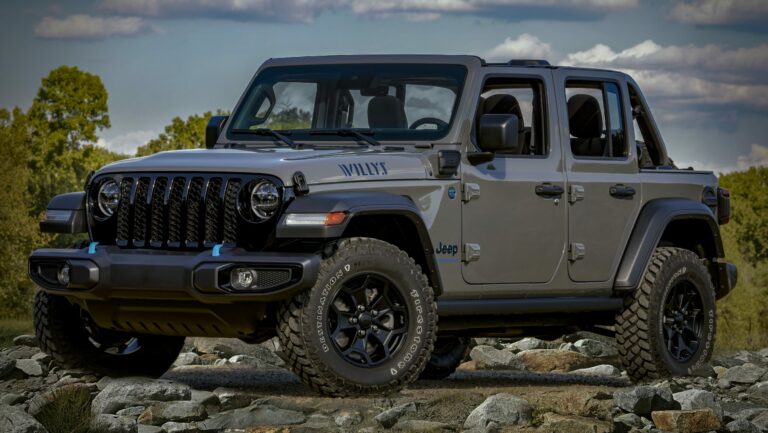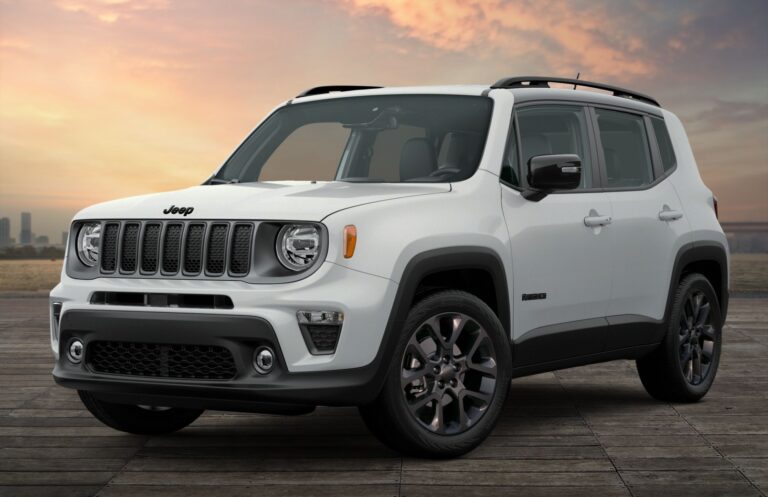Jeep Cherokee Price SRT: Decoding the Cost of a High-Performance Icon
Jeep Cherokee Price SRT: Decoding the Cost of a High-Performance Icon jeeps.truckstrend.com
The phrase "Jeep Cherokee Price SRT" often conjures images of raw power, unmistakable styling, and a driving experience unlike any other SUV. However, for those delving into the world of high-performance Jeeps, an immediate clarification is crucial: the legendary SRT (Street & Racing Technology) badge, renowned for its formidable performance, was exclusively bestowed upon the Jeep Grand Cherokee, not the standard compact/mid-size Jeep Cherokee. When people refer to "Jeep Cherokee SRT," they are almost invariably talking about the high-octane Jeep Grand Cherokee SRT. This article will thoroughly explore the pricing dynamics, ownership considerations, and everything you need to know about this iconic performance SUV, specifically focusing on the Grand Cherokee SRT.
The Grand Cherokee SRT stands as a testament to American muscle, blending the utility of an SUV with the heart of a sports car. It’s a vehicle that defies easy categorization, offering blistering acceleration, track-tuned handling, and an aggressive stance that commands attention. Understanding its price, whether new (historically) or on the used market, involves more than just a number; it encompasses the vehicle’s legacy, its performance capabilities, and the unique challenges and rewards of owning such a specialized machine. For enthusiasts and prospective buyers alike, comprehending the "Jeep Cherokee Price SRT" – correctly interpreted as the Grand Cherokee SRT – is the first step toward acquiring a true automotive legend.
Jeep Cherokee Price SRT: Decoding the Cost of a High-Performance Icon
The Grand Cherokee SRT: A Performance Icon Defined
Before delving into prices, it’s essential to understand what makes the Grand Cherokee SRT such a coveted vehicle. Born from Chrysler’s Street & Racing Technology division, the SRT moniker signifies a significant leap in performance over standard models.
Key Characteristics of the Grand Cherokee SRT:
- Engine: The heart of the SRT is its mighty naturally aspirated HEMI V8 engine. Early models featured a 6.1L HEMI, later evolving to the more powerful 6.4L (392 cubic inch) HEMI V8, producing approximately 470-475 horsepower and similar torque figures. This engine delivers exhilarating acceleration, often achieving 0-60 mph times in the mid-4-second range.
- Performance Tuning: Beyond the engine, the SRT benefits from a host of performance enhancements. This includes a sport-tuned suspension system (often adaptive), high-performance Brembo brakes, a performance-tuned all-wheel-drive system, and specialized exhaust.
- Aggressive Styling: The SRT’s exterior is unmistakably aggressive, featuring unique front and rear fascias, larger air intakes, body-colored wheel flares, a sculpted hood with heat extractors, and large-diameter performance wheels.
- Luxurious Sport Interior: Inside, the SRT combines performance-oriented features with premium comforts. Expect bolstered sport seats, carbon fiber or aluminum accents, a performance-oriented gauge cluster, and advanced infotainment systems.
- Exclusivity: While not a limited-production vehicle in the strictest sense, the SRT was always a specialized, high-tier offering, making it less common than standard Grand Cherokee trims.

This combination of power, handling, and distinctive styling is what drives its appeal and, consequently, its market value.
Understanding the "Price" Component: Factors Influencing Grand Cherokee SRT Value
The "Jeep Cherokee Price SRT" (Grand Cherokee SRT) is not static. Several factors significantly influence its market value, particularly in the used car market, where most transactions for this model now occur.

Key Price Determinants:
- Model Year: Newer model years generally command higher prices due to lower mileage, updated features, and less wear and tear. The 2012-2021 WK2 generation SRTs are the most common on the used market.
- Mileage: As with any used vehicle, lower mileage translates to higher value. A well-maintained SRT with low miles is a premium find.
- Condition (Interior & Exterior): Pristine condition, free from major dents, scratches, rust, and interior wear (especially on seats and trim), will significantly boost the price.
- Maintenance History: A comprehensive service record indicating regular maintenance, particularly regarding fluid changes, brake service, and tire rotations, adds immense value and buyer confidence. Performance vehicles require meticulous care.
- Optional Features & Packages: While many features were standard on the SRT, certain optional packages (e.g., advanced technology groups, panoramic sunroof, upgraded sound systems) can slightly increase the asking price.
- Aftermarket Modifications: This is a double-edged sword. While some tasteful, professionally installed performance upgrades (e.g., exhaust, cold air intake) might appeal to specific buyers, extensive or poorly executed modifications can detract from value.
- Geographic Location: Market demand and pricing can vary by region. Areas with a higher concentration of performance vehicle enthusiasts might see slightly higher prices.
- Market Demand & Rarity: While not extremely rare, the SRT’s unique appeal helps it retain value better than many other SUVs. The discontinuation of the SRT in favor of the Hellcat-powered Trackhawk and the shift to the new Grand Cherokee generation also impacts its collectible status for some.

New vs. Used: The Reality of SRT Pricing
For those searching for a "Jeep Cherokee Price SRT," it’s crucial to understand that new Grand Cherokee SRT models are no longer produced. The last model year for the SRT was 2021 (in some markets), after which the high-performance mantle was fully taken over by the even more extreme Grand Cherokee Trackhawk (with its supercharged Hellcat engine). The latest generation of the Grand Cherokee does not currently offer an SRT variant, focusing instead on more luxury and hybrid options.
Therefore, the discussion around "Jeep Cherokee Price SRT" is almost exclusively about the used vehicle market. This means prices are subject to depreciation, market fluctuations, and the individual condition of each vehicle.
Navigating the Used Market: Tips for Buying a Grand Cherokee SRT
Purchasing a used Grand Cherokee SRT requires diligence and a keen eye. These are high-performance vehicles that can be costly to repair if neglected.
- Thorough Pre-Purchase Inspection (PPI): This is non-negotiable. Have a trusted independent mechanic specializing in performance vehicles or Jeeps inspect the vehicle. Pay close attention to the engine, transmission, brakes (Brembos are expensive to replace), suspension components, and differential. Look for signs of abuse or deferred maintenance.
- Review Service Records: Request a complete service history. Look for consistent oil changes with recommended synthetic oil, transmission fluid changes, brake fluid flushes, and tire rotations. Missing records are a red flag.
- Check for Recalls: Ensure all open recalls have been addressed.
- Test Drive Extensively: Pay attention to engine noise (any knocking or ticking?), transmission shifts (smooth or harsh?), brake feel, and suspension sounds. Test at various speeds and road conditions.
- Verify VIN and Ensure the VIN matches all documentation and check for any salvage, flood, or accident history reports (e.g., CarFax, AutoCheck).
- Understand Aftermarket Parts: If modifications are present, inquire about their origin and installation quality. Poorly installed parts can lead to costly problems.
- Check Tire Condition: SRTs go through tires quickly. Factor in the cost of new performance tires if they are worn.
Cost of Ownership Beyond the Purchase Price
The "Jeep Cherokee Price SRT" isn’t just the upfront cost. Owning a performance SUV comes with ongoing expenses that can be significantly higher than a standard vehicle.
- Fuel: The 6.4L HEMI V8 is thirsty and requires premium octane fuel. Expect single-digit or low-teen MPG figures, especially with spirited driving.
- Insurance: Due to their high value, performance capabilities, and repair costs, insurance premiums for the Grand Cherokee SRT can be substantial.
- Maintenance: Regular maintenance is crucial. Oil changes, brake pads and rotors (especially Brembos), and high-performance tires are expensive. Spark plugs, serpentine belts, and other routine items are also pricier for a performance engine.
- Parts: Specialty SRT parts, from suspension components to engine parts, are often more expensive and sometimes harder to source than those for standard Grand Cherokees.
- Tires: Performance tires wear faster and cost significantly more than standard SUV tires.
Factor these ongoing costs into your budget to avoid surprises.
Price Trends and Depreciation
The Grand Cherokee SRT has historically held its value relatively well compared to many other SUVs, thanks to its performance credentials and dedicated enthusiast base. However, as a used vehicle, depreciation is inevitable. Newer model years (2018-2021) will naturally depreciate slower than older ones (2012-2017). The introduction of the Trackhawk and the shift in Jeep’s product strategy for the Grand Cherokee line may influence long-term values, potentially making well-maintained SRTs from the WK2 generation desirable as future classics for some collectors.
Practical Advice and Actionable Insights for Buyers
- Set a Realistic Budget: Not just for the purchase price, but for ongoing ownership costs.
- Research Thoroughly: Use online classifieds (AutoTrader, Cars.com, eBay Motors), specialty forums, and enthusiast groups to gauge market prices.
- Be Patient: The right SRT in the right condition at the right price may not appear overnight.
- Don’t Be Afraid to Negotiate: Based on market research and the vehicle’s condition, there’s always room for negotiation.
- Consider a Pre-Purchase Inspection (Again!): It’s the best money you’ll spend.
Jeep Grand Cherokee SRT Price Table (Estimated Used Market Values)
Please note: These are estimated ranges for well-maintained, average-mileage examples. Actual prices will vary significantly based on condition, mileage, features, and location. Original MSRP is provided for historical context.
| Model Year | Original MSRP (Approx.) | Estimated Used Price Range (USD) | Notes & Key Features |
|---|---|---|---|
| 2012-2013 | $55,000 – $60,000 | $18,000 – $28,000 | WK2 Generation begins. 6.4L HEMI (470 HP). Older tech, higher mileage. |
| 2014-2016 | $65,000 – $70,000 | $25,000 – $35,000 | Facelift, 8-speed auto (significant improvement), updated interior/infotainment. |
| 2017-2018 | $68,000 – $75,000 | $32,000 – $42,000 | Refined interior, Uconnect system improvements. Pre-Trackhawk era. |
| 2019-2021 | $70,000 – $80,000+ | $40,000 – $55,000+ | Latest WK2 models, lowest mileage, best condition. Some overlap with Trackhawk pricing. |
Disclaimer: These are general estimates and should not be taken as definitive pricing. Always conduct your own thorough market research and vehicle inspection.
Frequently Asked Questions (FAQ) about Jeep Grand Cherokee SRT Price
Q1: Is there really a "Jeep Cherokee SRT" or is it always the Grand Cherokee SRT?
A1: It is always the Jeep Grand Cherokee SRT. The compact/mid-size Jeep Cherokee never received an SRT performance variant. The common misconception arises from people simply saying "Cherokee" when they mean the larger "Grand Cherokee."
Q2: Why are used Grand Cherokee SRTs still so expensive?
A2: They hold their value well due to several factors: powerful performance (6.4L HEMI), aggressive styling, luxurious interior, relatively limited production numbers compared to standard models, and strong brand appeal. They offer a unique blend of SUV utility and sports car performance.
Q3: What’s the difference between a Grand Cherokee SRT and a Grand Cherokee Trackhawk?
A3: The main difference is the engine. The SRT uses a naturally aspirated 6.4L HEMI V8 (475 hp). The Trackhawk, introduced later, uses a supercharged 6.2L Hellcat HEMI V8 (707 hp), making it significantly more powerful and generally more expensive on the used market.
Q4: What’s the typical fuel economy for a Grand Cherokee SRT?
A4: Not great. Expect around 13-15 MPG combined in real-world driving. It’s a performance SUV with a large V8 engine and requires premium fuel.
Q5: Are parts and maintenance expensive for a Grand Cherokee SRT?
A5: Yes, significantly more so than for a standard Grand Cherokee. Performance-specific components like Brembo brakes, adaptive suspension parts, and specialized engine components are costly. Labor rates for performance vehicle mechanics can also be higher.
Q6: What model years should I look for when buying a used Grand Cherokee SRT?
A6: The 2014-2021 models (WK2 generation with the 8-speed automatic transmission) are generally preferred due to the improved transmission, updated infotainment, and often better overall refinement. Newer models will have lower mileage and potentially more remaining life.
Q7: Can I get financing for a used Grand Cherokee SRT?
A7: Yes, most banks and credit unions offer financing for used vehicles. Be aware that interest rates might be higher for older models or those with very high mileage.
Conclusion: The Enduring Appeal of the Grand Cherokee SRT
The "Jeep Cherokee Price SRT," when correctly understood as referring to the Jeep Grand Cherokee SRT, represents an investment in a unique blend of American muscle, SUV versatility, and track-ready performance. While new models are no longer available, the robust used market offers an opportunity to own a piece of automotive history.
Understanding the factors influencing its price, being diligent in your pre-purchase research, and budgeting for the comprehensive cost of ownership are crucial steps. The Grand Cherokee SRT is more than just a vehicle; it’s a statement. For those seeking exhilarating performance wrapped in a practical package, the Grand Cherokee SRT remains a compelling choice, offering a driving experience that continues to justify its premium position in the performance SUV landscape. It’s a vehicle that embodies power, style, and an undeniable presence, making its price a gateway to a thrilling ownership journey.




